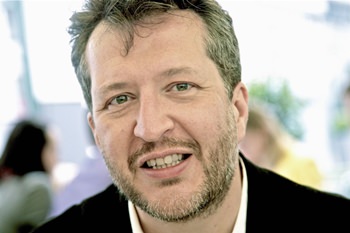At this time of year, hardly a week goes by without reading in the newspaper that summer storms are brewing in the central provinces and possibly heading south to the Sunshine Province. Fortunately the storms don’t always appear or just seem to fizzle out before they get here. I don’t blame the newspaper of course, because it is after all, “the newspaper you can trust” but I’ve been told that accurate weather forecasting is notoriously difficult even with the sophisticated technology that we have at our disposal today. I can appreciate that because even the movement of my dogs is almost impossible to predict with any degree of accuracy.

Back in the old days when I was a spotty teenager living on a cold grey island off the coast of Europe, it was winter storms we had to worry about. They could be fierce things too, when howling winds would come thundering down the Irish Sea and churn the waters into raging waves. It’s easy to understand how the ancients felt that some angry gods were at work.
The idea of imitating the sound of a storm in music goes back a good many years, but it wasn’t until the nineteenth century, when larger orchestras began to develop – that more and more composers started emulating the sounds of nature in their music.
The Romantic Movement, which began to emerge during the middle years of the nineteenth century, was sufficient encouragement for composers, along with painters and writers to turn to nature for their ideas. The English painter Joseph Turner was one such person and was years ahead of his time. During his lifetime he was considered somewhat controversial, but his contribution to Romantic painting (especially his stormy seascapes) was enormous.
Strangely enough, German Romanticism developed comparatively late though even in his Pastoral Symphony of 1808 Beethoven evoked the sounds of a thunderstorm, albeit a fairly tame one. Berlioz did much the same thing in his opera The Trojans. Both Tchaikovsky and Sibelius wrote stormy overtures entitled The Tempest derived from Shakespeare’s play of the same name.
Benjamin Britten (1913-1976): Four Sea Interludes Op 33a. BBC Symphony Orchestra cond. Sakari Oramo (Duration: 16:35, Video: 720p HD)
If Britten had followed in his father’s footsteps, he would have become a dentist. Fortunately he turned to music instead, becoming a central figure of twentieth-century British classical music. He was born in the fishing port of Lowestoft in Suffolk and remained close to the sea all his life. His first opera Peter Grimes dates from 1945 and tells the story of a mean, violent fisherman who is ostracized by the residents of the fishing town in which he lives. The opera is a social tragedy peopled with several unsavory characters but the powerful music (indeed, a great deal of Britten’s music) seems to evoke the bleak seas and skies of the eastern coast of England.
The Four Sea Interludes come from the orchestral sections in the opera and oddly enough, they have become more popular than the opera itself. From the opening moments, you can sense the cold North Sea in the early hours of the morning. But even during the haunting flute melodies, there’s a brooding, uncomfortable sense of foreboding. The sea dominates the music but you’ll have to wait until the last movement (at 12:09) for the storm. And what a storm it is! It’s a ferocious tempest with endless explosions of thunder, a crashing sea and a fearsome wind shrieking through the ship’s rigging.
Thomas Adès (b. 1971): Overture “The Tempest” Op. 22a. The Chamber Orchestra of Europe cond. Thomas Adès (Duration: 04:48, Video: 480p)
If Britten’s storm in Peter Grimes is a Force 9 gale, this one is a Force 12 hurricane. Thomas Adès (AH-dess) was born in London and has a formidable list of works to his credit including two operas. In 1992 he was appointed Britten Professor of Composition at the Royal Academy of Music. The overture is from his opera The Tempest based on the eponymous Shakespeare play and in it, Adès creates a storm of Biblical proportions. Compared to this mind-shattering tempest, the thunder-storm that appears in Beethoven’s Pastoral Symphony sounds more like a summer shower. Adès pushes dissonance pretty well to the limits in this exciting work but brings it to a satisfying and peaceful conclusion.
It’s interesting to read a few of the less than complimentary comments on the YouTube page added by visitors. Some of them indicate a typical reaction to something which is new and possibly difficult to initially understand. The remarks remind me of the kind of ignorant verbal abuse Beethoven had to suffer in his day from some music critics who found his music “incoherent, shrill, chaotic and ear-splitting”. The music critic and writer, August von Kotzebue (who wrote that silly description) would have been very cross about the music of Thomas Adès. Very cross indeed.
 |
 |
 |





